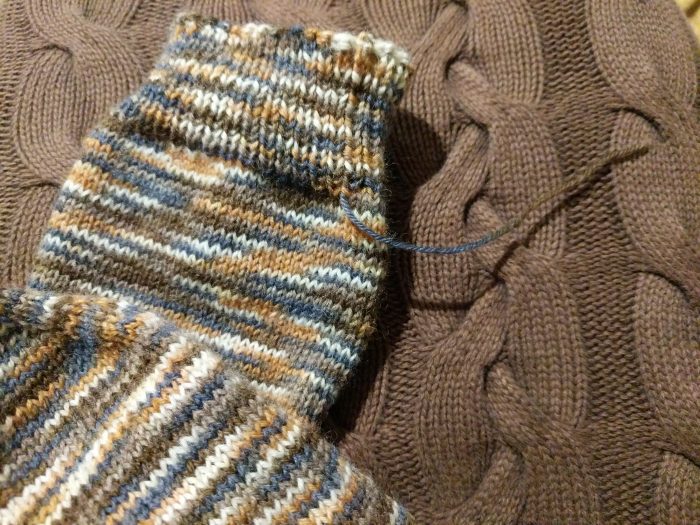There comes a time in everyone’s life, sooner or later, when they stop partway through getting dressed, and, for the first time, ask themselves that deep question: where do socks come from?
Fear not, your questions are about to be answered, in the relative anonymity and privacy of the internet (relative to your settings, choice of browser, &c.).
The process begins when a sock egg is laid. These eggs can be found in great numbers at your LYS (Lair of Young Socks), where you can select the sock species of your preference. As socks do not like the solitary life, it is generally best to get two eggs of the same sort, although some advanced practitioners have had success with combining two eggs of complementary though different species.
The sock egg then needs to be incubated. This is best done, as one might imagine, by something soft and fluffy. If you have a cat already resident in your household, you can rest assured that your cat’s maternal instinct will take over in this situation. Even if your cat is, as it happens, both male and desexed.
As you can see if you look closely, the sock egg above is already beginning to lose its original snug roundness and become looser in preparation for taking on its adult form. This is perfectly normal and should not be a source of concern.
In due course, the sock will be fully hatched, and no trace of its egg phase will remain, with two exceptions. The first, and most noticeable, will be the protective belly-band the egg first arrived in – which should be retained, as it provides advice on caring for your new sock.
The second are the two chalazae, which will be found at the top and bottom of the sock. These should be neatly secured within the body of the young sock, in order to increase its longevity. Any excess length can then be trimmed, without causing harm to the sock.
In older age, the sock may require support from a substitute egg while its weaker parts are reinforced. This is well worth the effort, and will greatly extend the lifespan of your sock.
And that, ladies and gentlemen, birds and bees, is where socks come from.



